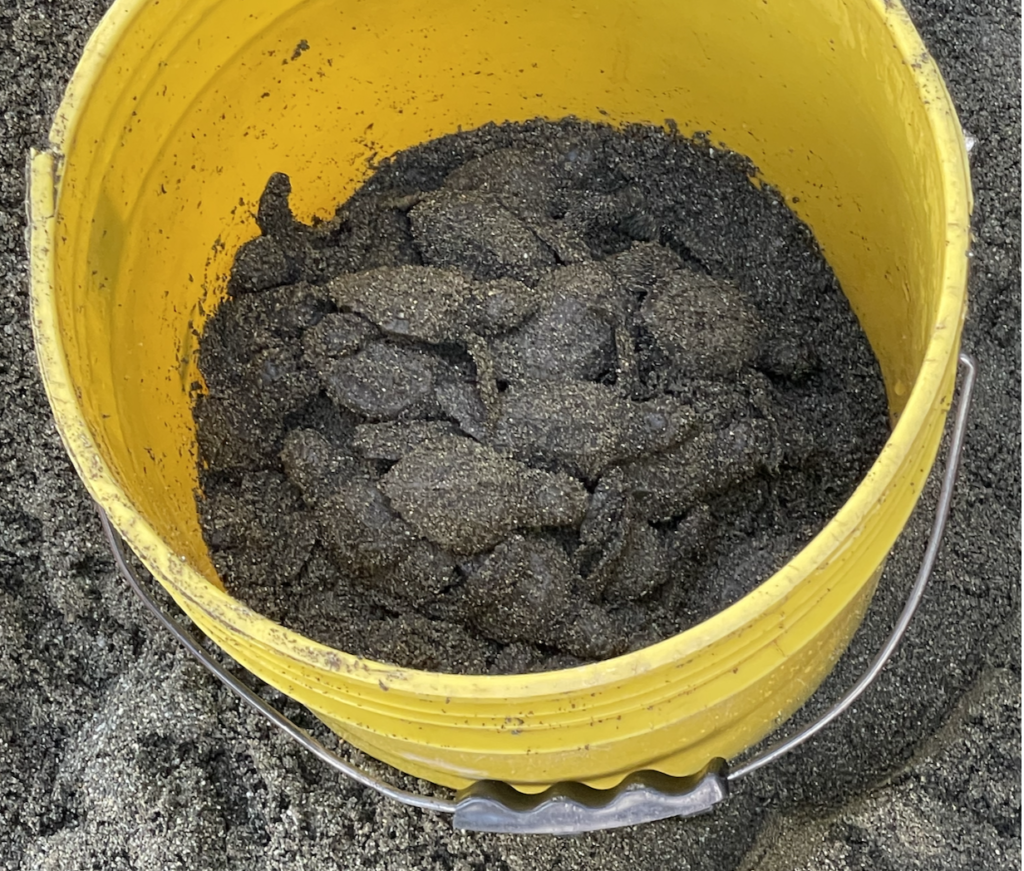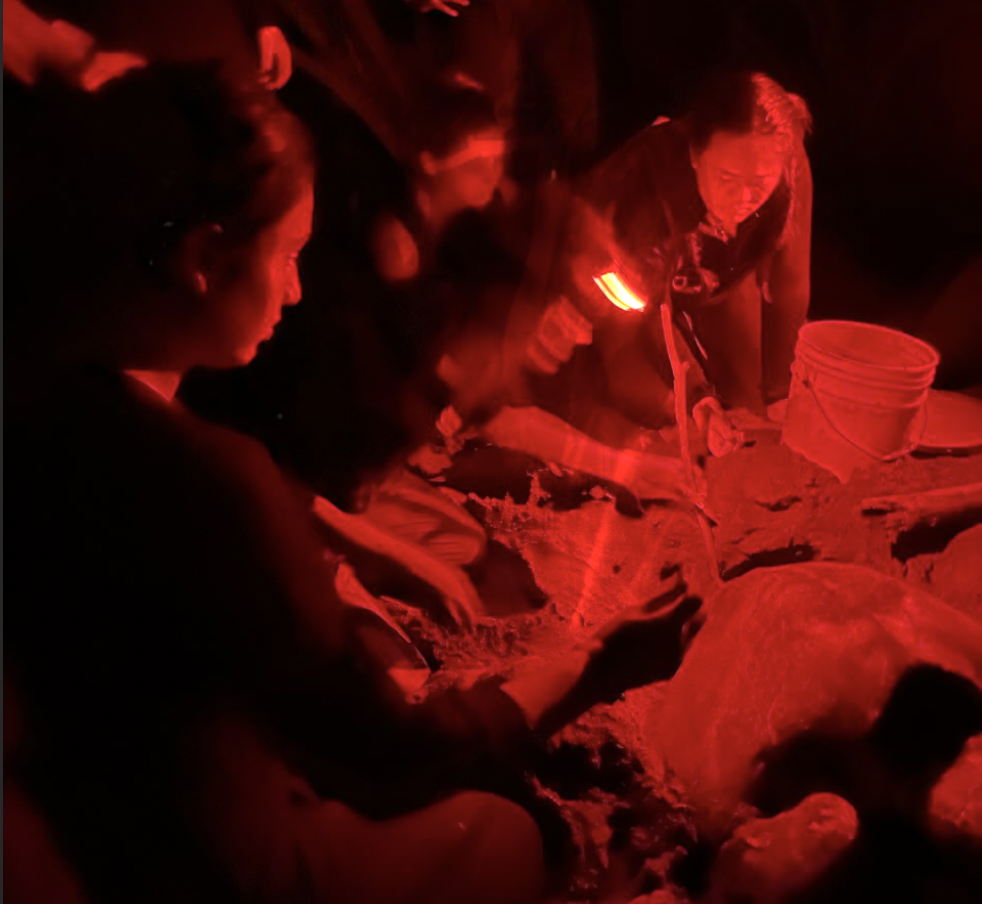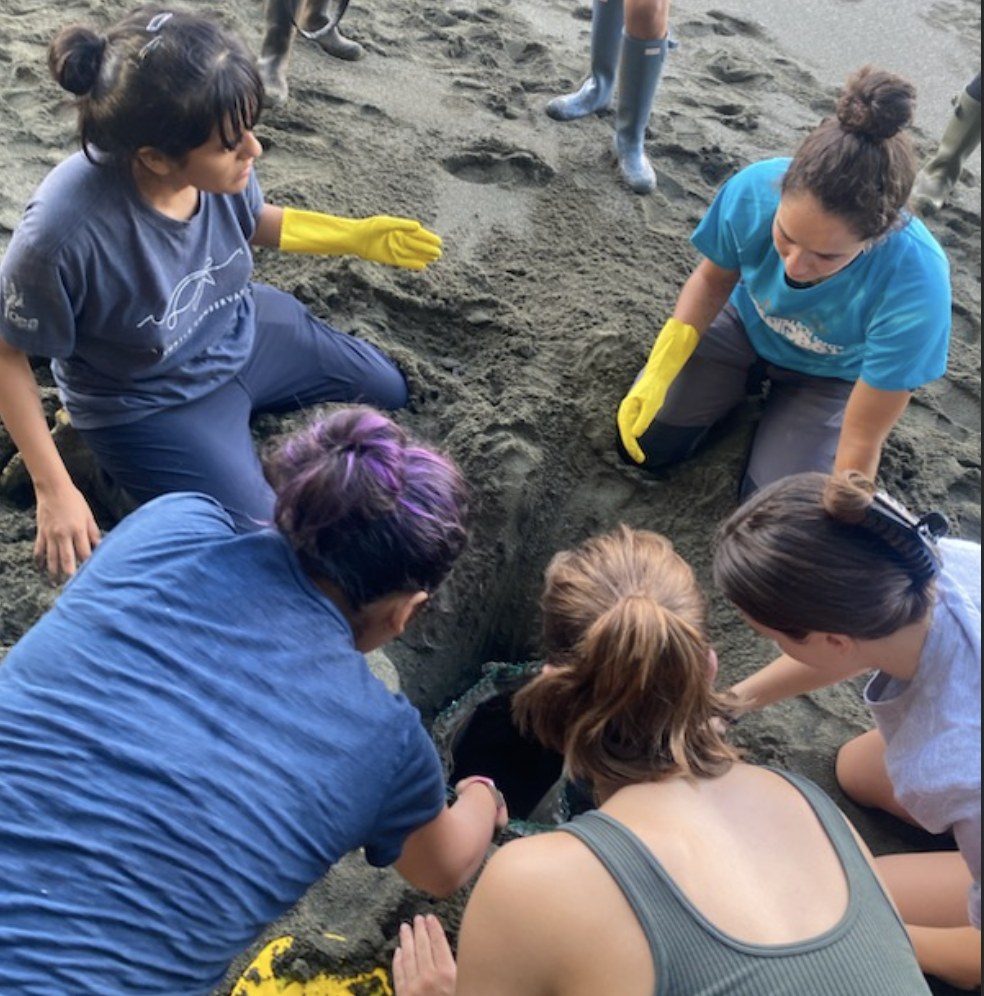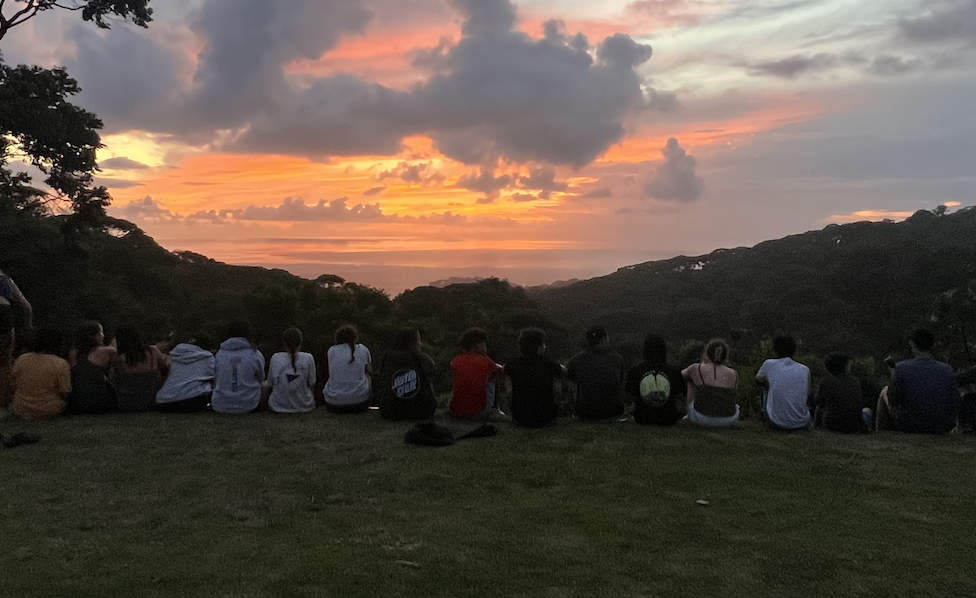It was 6 a.m., and the light peeked through the canopy of the Osa Rainforest, which is just outside to the Parque Nacional Corcovado in a peninsula in the far southwest corner of the country.
I walked through the foliage, being careful not to touch any plants in the rainforest, as I followed a line of students to the beach. In the distance, I could hear the waves crashing and the squelch of my boots in the mud. Clutching my flashlight and keeping my eyes glued to the ground, I was careful not to step on anything or trip.
When the ocean came into sight, the crashing waves only feet away, a buzz of excitement filled the air. We were heading to a baby turtle nest where we would watch the baby turtles reach the ocean.
At the end of August and beginning of September, 21 students went on a 5-day trip to Costa Rica to learn about environmental science and participate in conservation projects. While there, the students, which consisted of both AP Environmental Science and non-Environmental Science students, went on morning and nightly turtle patrols, planted mangroves, visited a regenerative farm and explored living in the rainforest. The trip was a part of Nature Now International, a nonprofit organization founded by alumni Danielle, Daviana and Julian Berkowitz-Sklar.
Turtle patrols were some of the most informative and special moments of the entire trip. We watched the entire life cycle of a turtle — from the eggs being laid to them hatching over a period of about 50 days, observed baby turtles make their way to the sea, met a mother laying eggs and captured a juvenile turtle.

Photo by Sanjoli Gupta
This is a bucket full of baby turtles that were dug out of their nest and ready to move towards the ocean.
We luckily saw multiple turtles during every night patrol; we helped conduct health checks by looking for asymmetrical notches or barnacles on the turtle.
We often got on our hands and knees on the beach to dig holes to put eggs into or to excavate a turtle nest that had hatched. We also dug out the nests to help release baby turtles into the wild. While they walked towards the ocean, we stood by their side and made sure no predators got to them.
There is a low survival rate for baby turtles: One in a 1,000 makes it to adulthood. Moreover, many turtles don’t make it to adulthood because of human interference such as with bright lights and trash in the oceans.
Because baby sea turtles were hatching along the coast and making their way to bright lights in restaurants instead of the sea — which caused them to die — we painted half buckets to cover the lights at night so as to not confuse the turtles.
My favorite part of the trip was all the turtle patrols. Each night or early morning was filled with excitement and intrigue for the possibility of seeing a turtle that day. During night patrols, our guides would use red lights to guide us so as to not spook the turtles, which can’t see the color red. While walking around the beach, flashing red lights shone from both sides as other groups spotted turtles and communicated with each other.
The cool night wind and thunder between the clouds on the horizon above the sea made the moment all the more special. We would watch the turtles do a little dance after burying their eggs under the sand, which I thought was the cutest thing ever.

Courtesy of Elena Burgos
Students help with the measurements and health inspection of a turtle during a night patrol.
During our adventures, however, we saw the ugly parts of nature too. We saw as the researchers opened unhatched eggs: Some were eaten by maggots, while others had only partly developed and stopped. Although seeing dead turtle eggs was disheartening, we were reminded that animals die in large numbers in nature and it’s a natural part of the process. Instead of harboring a living creature, the broken egg shells instead added nutrients to the sand for other organisms to thrive.
Spotting turtle tracks was also extremely interesting. They uncovered the direction the turtle was going and its species. For example, Greenback turtles are heavier and had symmetrical tracks on the beach, while Olive Ridleys had asymmetrical tracks.

Photo by Caitlin Weber
Senior Alexandra Cleland, Lucie Le Toquin and I digging the sides of the nest to reach the baby turtles in the relocated nest. Nests could be relocated to safer areas if the original spot chosen by the mother turtle wasn’t safe.
My experience was memorable in that I not only got to see wildlife, but was also part of the effort to rescue it.
While going on turtle patrols, we were staying in the Osa Peninsula, which has an astounding 5% of the world’s biodiversity. With the monkeys overhead during walks and frogs on the path outside our rooms, we felt one with nature.
When touring the regenerative farm, we saw greenhouses, chicken coops and passion fruit vines. We also got to see how farming was sustainably reestablished after years of overgrazing in the area and even dabbled in planting watermelon squash.
We even planted mangroves along a lake to re-establish mangrove forests, which were previously cut down for farmland and cattle ranching. The mangroves help filter water in the lake and protect against storms. This helps establish the once existing flora and fauna of the area. Our guides pointed out that the ground and dirt was orange in some parts because the pH was so high from years of overfarming and cattle grazing.
Learning just how difficult it was to reestablish these mangrove forests was special because we could physically see the effects of unsustainable practices and simultaneously saw how we can make an impact.
Beth Berkowitz-Sklar, mother of Class of 2022 alumnus Julian Berkowitz-Sklar, was one of the organizers of the trip. She said we should still carry our awareness of protecting the Earth in our daily lives, even if we didn’t go into environmental science or conservation. As a pediatrician, she doesn’t work in the environmental science field, but still attends these trips and helps plan them with the rest of her family.
We also visited the Alturas Wildlife Center, which housed wildlife that can’t be released into the wild due to injury. Mocha, a sloth in captivity there, had paralysis in one of its limbs that would make it difficult to survive in the wild; Julietta, a parrot, was raised in captivity.
With the news constantly giving a grim outlook on the future — having stories about how wildlife and species are disappearing at an alarming rate in class, it was special to see that places like these existed to protect wildlife. It was also heartening to see that people cared about the planet and had high hopes for its future and survival.
Interacting with wildlife and participating in research was starkly different from going to a museum or a zoo because these animals weren’t behind glass or present for human interaction, but just living their lives while researchers tried to protect them and learn more about them. The experience seemed authentic and special in that way.
This trip helped me connect what we had learned in the classroom through real-life experiences. My love for environmental science has only grown and I am excited to continue exploring it in the future.

Photo by Julian Berkowitz-Sklar
The students sit and watch the sunset after a day of planting mangroves and measuring turtles on the last day of their trip.























